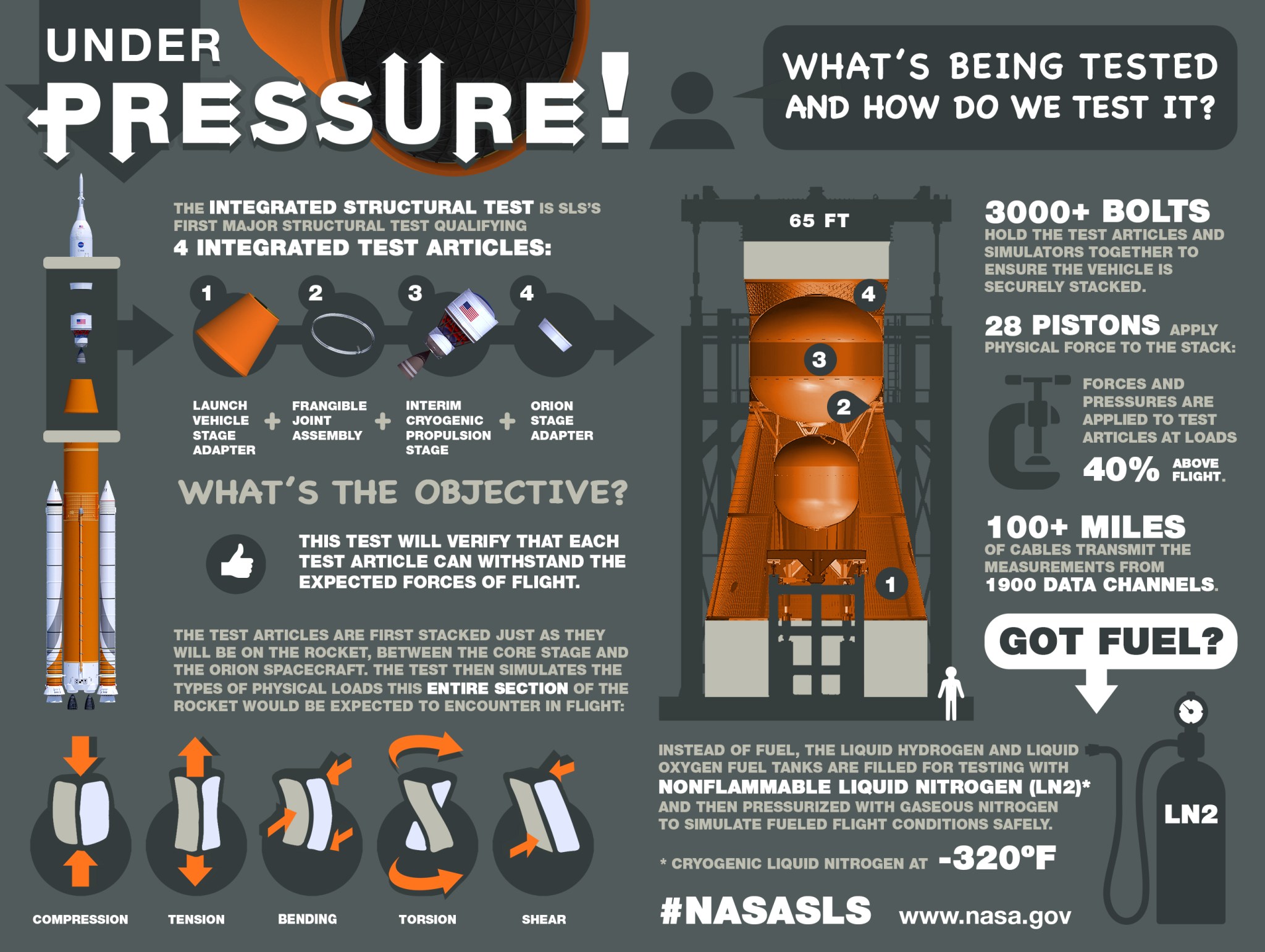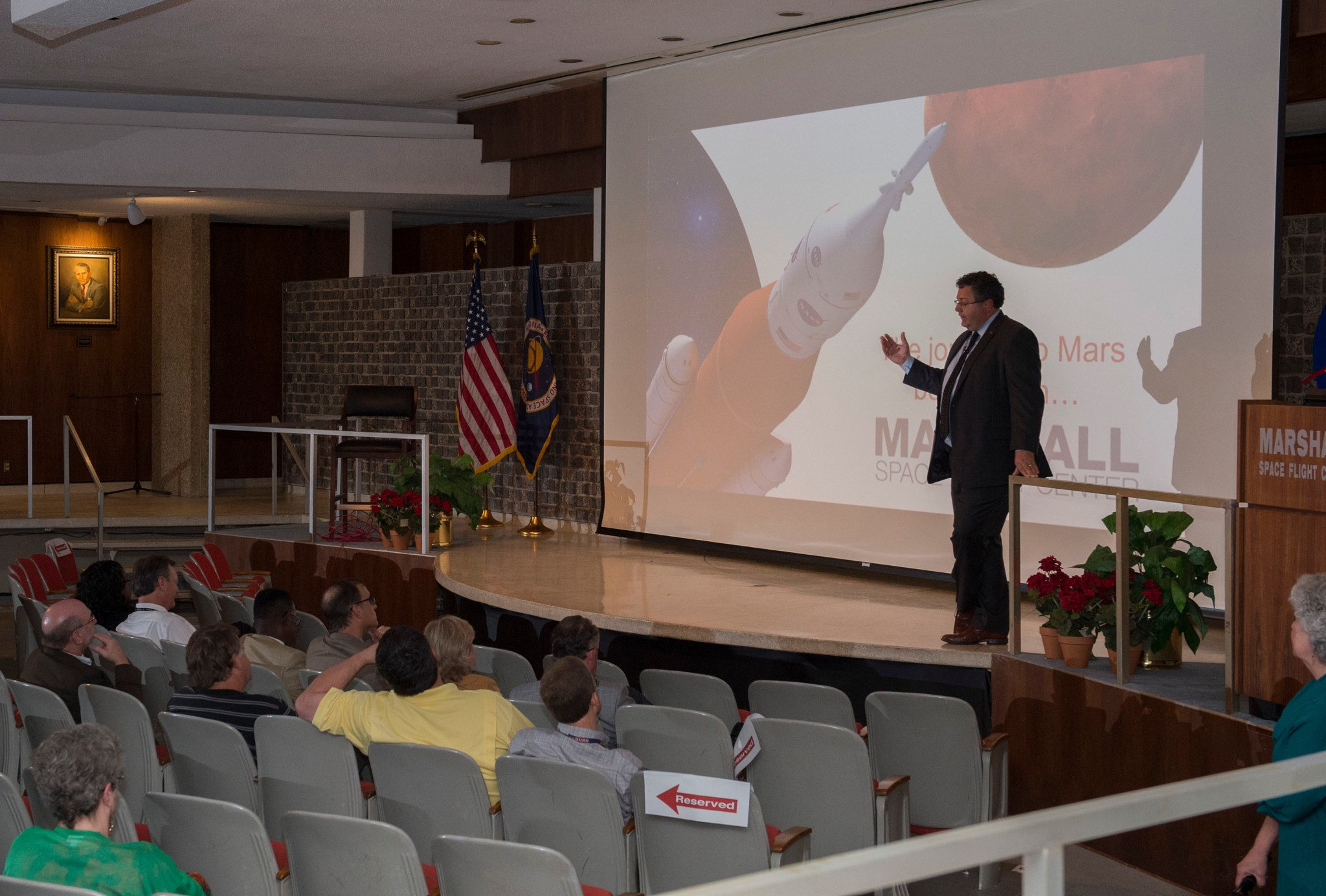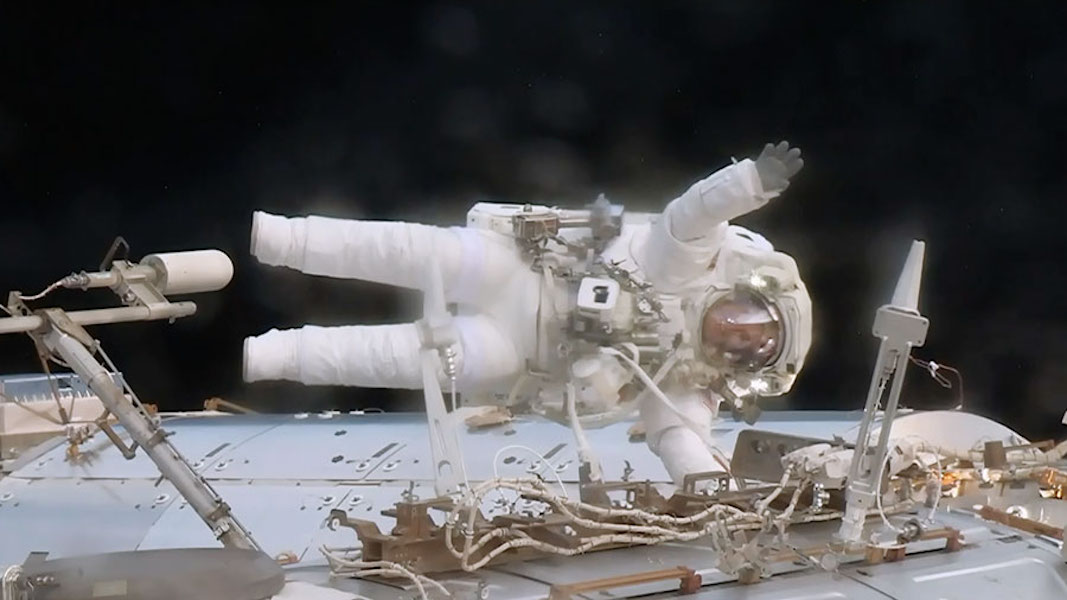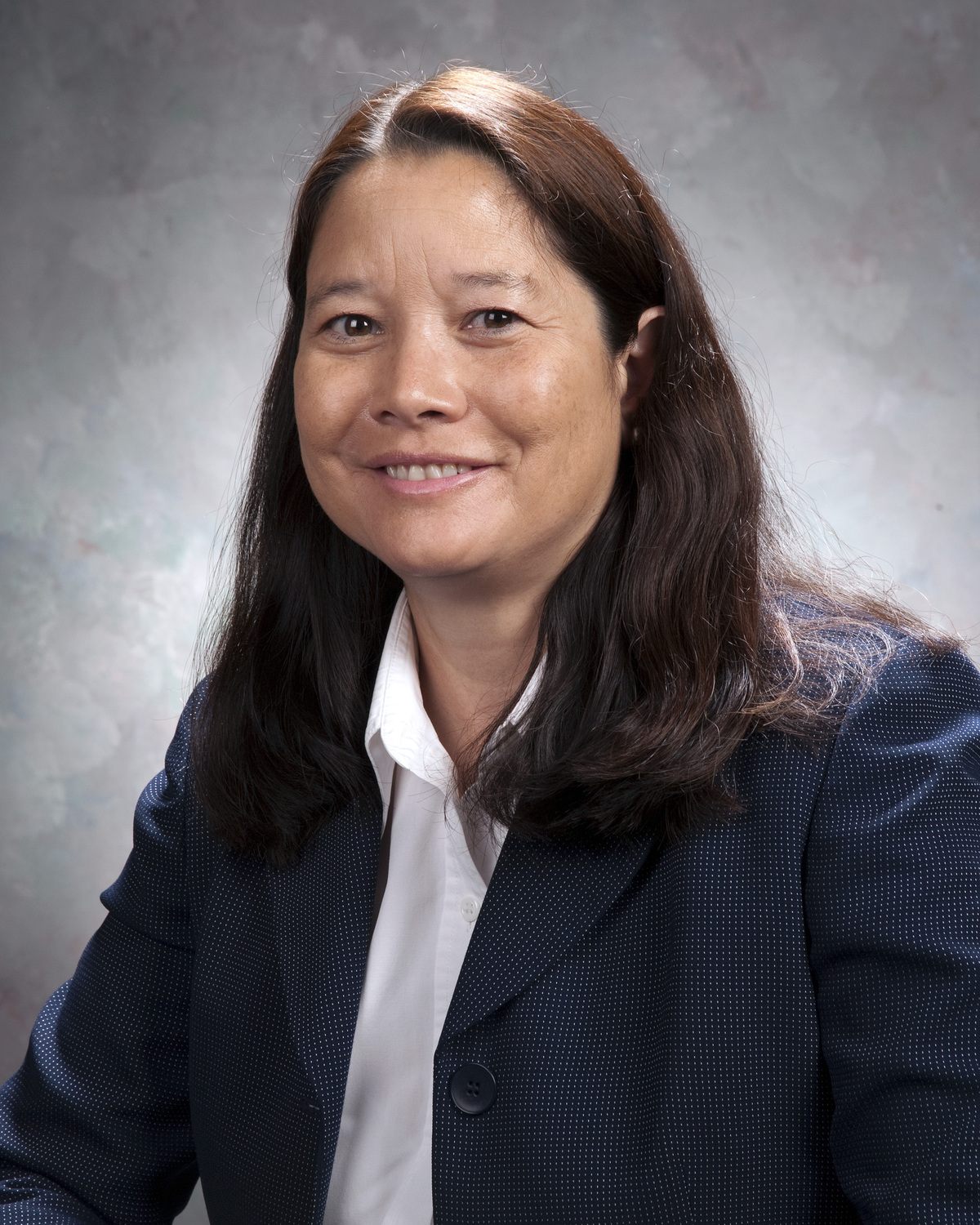In This Week’s Star
- Marshall Engineers Complete Integrated Structural Testing on the Top of SLS
- Marshall Center Director Todd May Discusses NASA’s FY18 Budget
- NASA’s Space Launch System Engine Testing Heats Up
- Unscheduled Spacewalk Repairs Failed Computer on Space Station
- May 18 Shared Experiences Forum Features Dale Thomas and the Golden Eagle Award
- Marshall to Celebrate Asian-American/Pacific Islander Heritage Month May 31
- Marshall Team Members Get Special Behind-the-Scenes Look at SLS Progress
- Astronaut Shane Kimbrough Visits Marshall for Plaque Ceremony
- Pegasus’ Arrival at Marshall Featured on ‘This Week @NASA’
- This Week in NASA History: Apollo 10 Splashes Down — May 26, 1969
- Obituaries
Marshall Engineers Complete Integrated Structural Testing on the Top of SLS
Engineers at NASA’s Marshall Space Flight Center recently successfully completed a major test series on hardware for NASA’s new heavy-lift rocket, the Space Launch System.
The integrated structural tests ensure the top part of SLS will be able to endure the stresses of launch and flight during the rocket’s first integrated flight with NASA’s Orion spacecraft. SLS, with Orion atop, will take astronauts on missions to new destinations in deep space, including Mars.
“With the completion of this round of testing, the in-space stage of SLS and its connecting adapters have demonstrated that they are structurally sound to bear the stresses of launching Orion off the surface of Earth and sending it on its way around the moon,” said Steve Creech, manager of the Spacecraft Payload Integration and Evolution Office at Marshall.
Two simulators and four qualification articles of the top of SLS were stacked as they will be for launch and then pushed, pulled and twisted by forces similar to those experienced in flight. More than 50 test cases were completed for the series. Data from the tests were recorded through 1,900 instrumentation channels, measuring the strain on the test articles, temperature, deflection and other factors.
Qualifying the hardware proves it meets the requirements and performs the way it is designed to. While qualification testing shows that various parts of the rocket perform as predicted, NASA still has to integrate and test key elements of the rocket that work together during various phases of the mission.
Marshall Center Director Todd May Discusses NASA’s FY18 Budget
By Brian C. Massey
Following delivery of President Donald Trump’s fiscal year 2018 budget proposal on May 23, NASA Marshall Space Flight Center Director Todd May held an all-hands meeting with the Marshall workforce, which began with a “State of NASA” address by NASA Acting Administrator Robert Lightfoot. May discussed the administration’s budget request in relation to the center and its programs and mission.
The president’s overall FY18 budget request for NASA of $19.1 billion is a “very positive budget,” said Lightfoot. “As NASA approaches its 60th anniversary, the budget request will maintain NASA’s place as the global leader in space. We appreciate the bipartisan commitment to our continuity of purpose.”
“The president’s budget proposal shows the administration’s commitment to continuing NASA’s leadership in space exploration,” May added. “We’re building the future of human space exploration today, and at Marshall, our talented workforce is laser-focused on delivering on our commitments.”
Marshall’s proposed budget for FY 2018 is approximately $2.7 billion, and according to May, gives the center the resources needed to deliver on its commitments, most notably $1.9 billion for NASA’s Space Launch System program and International Space Station science operations.
The proposed budget also includes $52 million to fund Marshall’s Space Technology portfolio, which includes NASA’s Centennial Challenges program, Technology Demonstration Missions Program, work for a potential future SLS exploration upper stage, next-generation life support systems and propulsion technologies.
Marshall’s science portfolio will also receive $185 million in the proposed budget. Marshall manages several robotic missions, including NASA’s Juno, Dawn, InSight, OSIRIS-Rex and Europa Clipper missions.
May concluded his all-hands address to the Marshall team by saying, “The bottom line is that we enjoy strong support because you make it easy. You give life to great ideas and turn dreams into historic achievements. We are well-positioned for the future. We have the people and plan in place to tackle any challenges that lie ahead, and make the most of the opportunities that come our way.”
Archived video of May’s address can be found on Marshall Desktop TV, and charts from his presentation can be found in on the Director’s Corner page inside ExplorNet.
For more information about the NASA FY18 budget proposal, click here.
Massey, an ASRC Federal/Analytical Services employee and the Marshall Star editor, supports the Office of Strategic Analysis & Communications.
NASA’s Space Launch System Engine Testing Heats Up
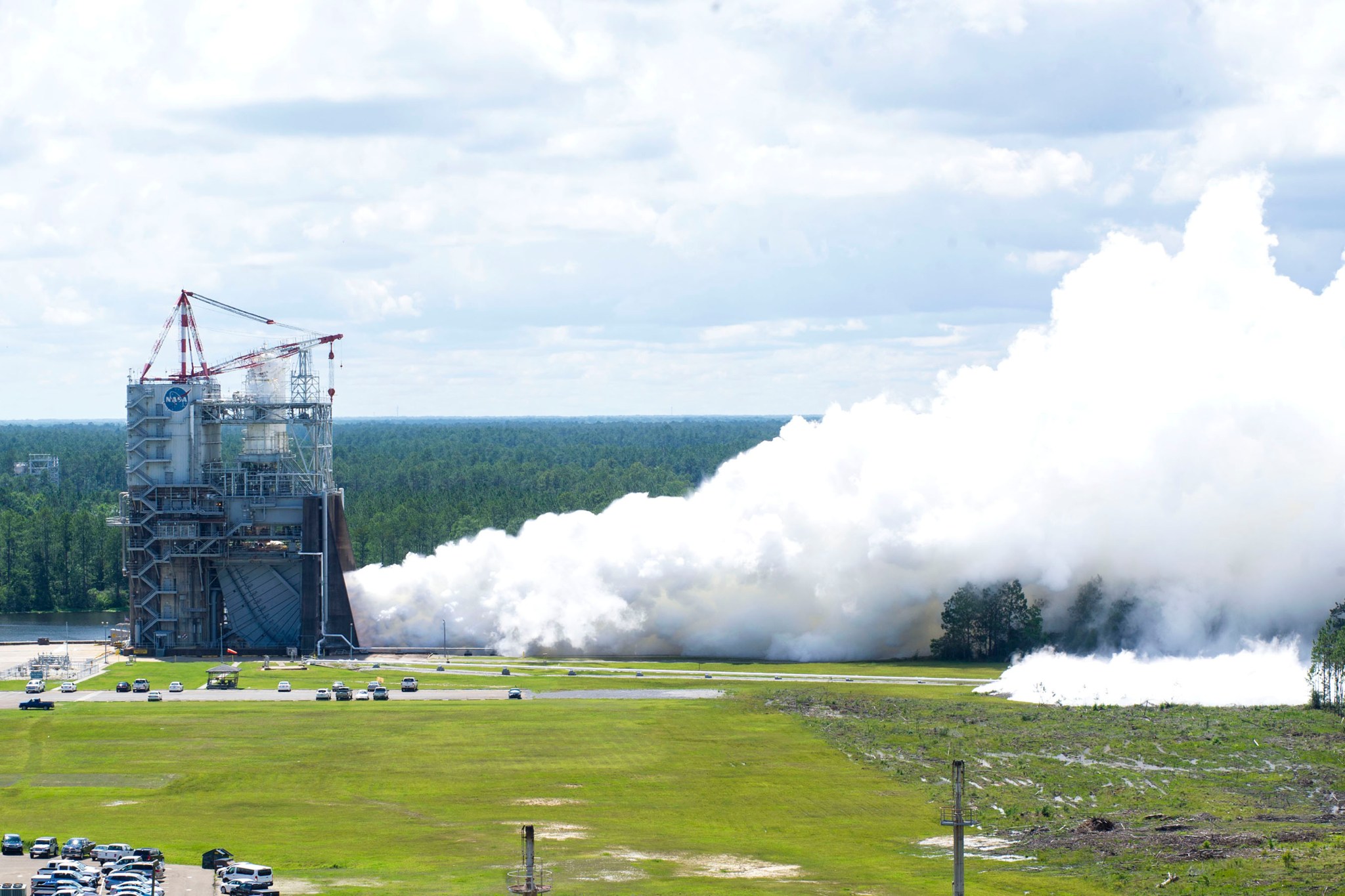
NASA engineers conducted a successful 500-second test of a second RS-25 flight controller May 23 at NASA’s Stennis Space Center. The test was set after a facility issue, subsequently resolved, forced rescheduling of a May 16 hot fire. The successful test marks another milestone toward launch of NASA’s new Space Launch System rocket on its first integrated flight with NASA’s Orion spacecraft — Exploration Mission-1. The engine’s flight controller allows communication between the engine and the rocket. The first flight controller was tested in March at Stennis for installation on one of the four EM-1 engines. Pending review of data collected from the May 16 test, the second flight controller will also be installed for use on EM-1. (NASA/Stennis)
Unscheduled Spacewalk Repairs Failed Computer on Space Station
NASA astronauts Peggy Whitson and Jack Fischer conducted an unscheduled spacewalk outside the International Space Station May 23 to replace a unit that regulates the operation of radiators, solar arrays and cooling loops.
The relay box, known as a multiplexer-demultiplexer, is one of two units that also routes commands to other vital station systems. Because both are capable of performing critical station functions, the crew on the station was in no danger and operations were not affected.
The failed box was initially installed on the station during a spacewalk by Whitson on March 30. A spare unit stored inside the station was used to replace the faulty one.
While Whitson performed the replacement, Fischer installed a pair of antennae to enhance wireless communications for future spacewalks.
This was Whitson’s 10th spacewalk, moving her into third place for cumulative spacewalking time, and the second for Fischer.
May 18 Shared Experiences Forum Features Dale Thomas and the Golden Eagle Award

Dale Thomas, retired associate director, technical, of NASA’s Marshall Space Flight Center presents during the May 18 Shared Experiences Forum. Thomas, now a professor at the University of Alabama in Huntsville, discussed tragedies and near-tragedies and examined the key teams that led to the success or failure in these situations. Thomas included both the Challenger and Columbia space shuttle accidents, the Apollo 13 successful failure, the nuclear meltdown at Three Mile Island in New York and the Quantas Flight 32 near-miss in his examples. Thomas’ talk was the 13th in the Shared Experiences Forum Series, part of Marshall’s Mission Success is in Our Hands initiative sponsored by the Safety & Mission Assurance Directorate. (NASA/MSFC/Emmett Given)
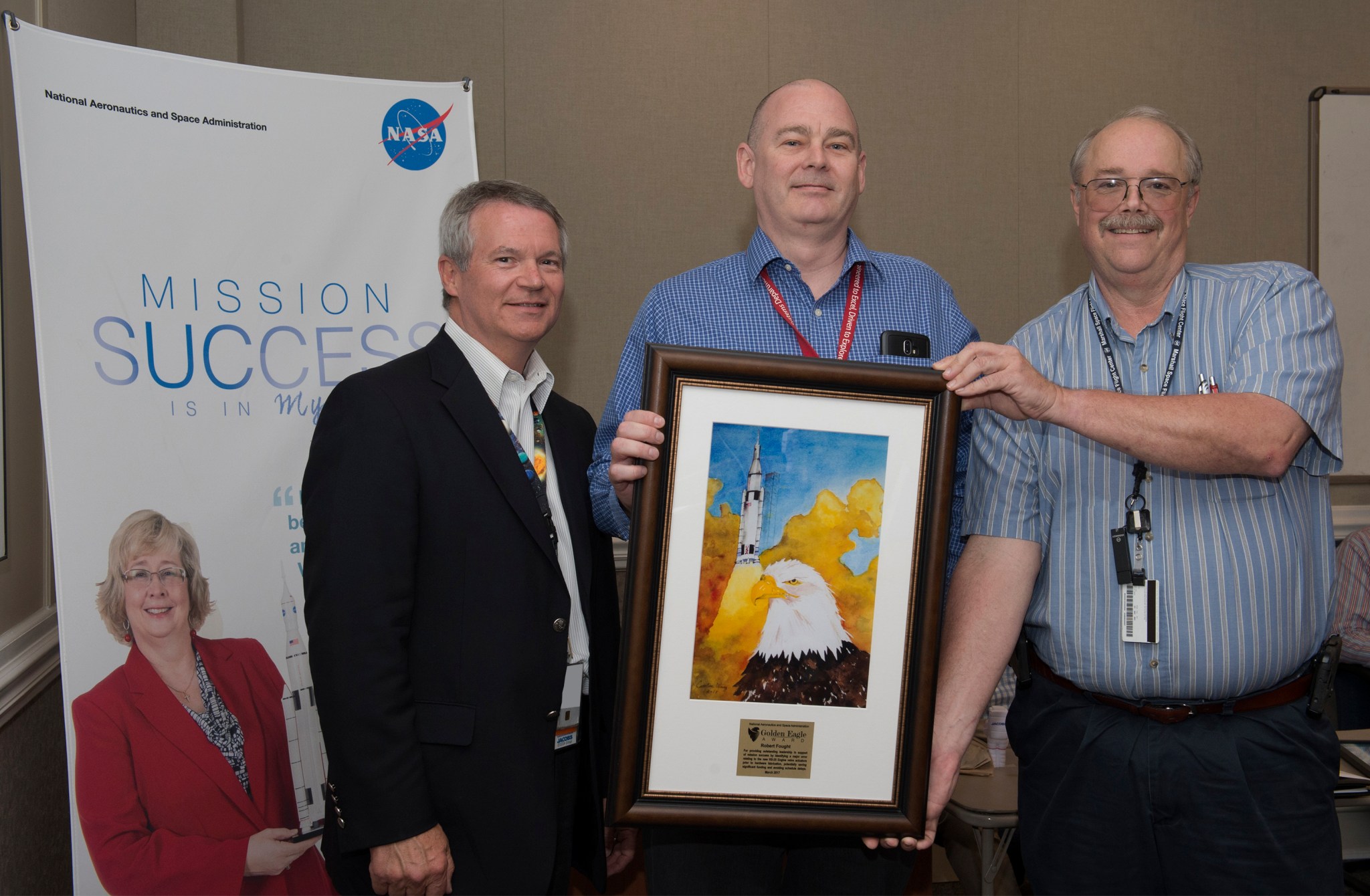
Robert Fought, center, a systems engineer in the Propulsion Systems Department, receives the Golden Eagle award from Rick Burt, right, head of Marshall’s Safety & Mission Assurance Directorate, and Randy Lycans, the ESSSA General Manager of Jacobs in Huntsville. Fought received the award for “outstanding leadership in support of mission success” by proactively identifying an RS-25 engine valve actuator issue before hardware fabrication began. (NASA/MSFC/Emmett Given)
Marshall to Celebrate Asian-American/Pacific Islander Heritage Month May 31
By Rick Smith
On May 31, NASA’s Marshall Space Flight Center will celebrate the culture and contributions of team members whose Asian and Pacific Islander heritage enhances NASA’s diverse workforce, just as their work enriches the nation’s science, engineering and exploration endeavors.
The Asian-American/Pacific Islander Heritage Month event will be held from 10 a.m. to noon in Building 4200, Room P110. All Marshall team members are invited to participate. Marshall Deputy Director Jody Singer will welcome participants, and Josephine Burnett, director of Exploration Research and Technology Programs at NASA’s Kennedy Space Center, will provide the keynote address.
The event, which embraces the national heritage month’s 2017 theme “Unite Our Voices By Speaking Together,” will include a cultural awareness presentation by Marshall team members Ron Eng, Tony Kim, Lien Moore, Mat Park and Shashi Varshney, and a yoga demonstration by Leah Fox, a safety and occupational health specialist in Marshall’s Safety & Mission Assurance Directorate.
Loucious Hires, director of Marshall’s Office of Diversity and Equal Opportunity, will conclude the event by inviting participants to the Building 4200 courtyard outside Charlie’s Grill. There, they will be able to browse cultural artifacts and sample cuisine from India, Korea, Japan, Thailand and Vietnam. Students from the University of Alabama in Huntsville’s Japanese Performance Group will perform.
Marshall’s Asian-American/Pacific Islander Heritage Month event is sponsored and organized by the Office of Diversity and Equal Opportunity. For more information, contact Abbie Johnson, Marshall equal employment manager.
More about Josephine Burnett
A 30-year NASA veteran who dreamed of spaceflight as a child and counts the late NASA astronaut Sally Ride — the first American woman to fly to space — among her heroes, Burnett praises the agency’s dedication to recruiting a diverse workforce.
“NASA was already ahead of the game in terms of providing opportunities for everybody,” she said in 2013, recalling her hiring in 1987. “We wouldn’t be where we are today if not for the contributions made by every NASA employee, no matter what gender you are or what cultural background you have.”
Over the years, Burnett supported a series of science and exploration flight missions, contributing to the Spacelab and Space Shuttle programs and assembly of the International Space Station, and overseeing Kennedy’s Advanced Exploration Systems. She also serves as executive champion for Kennedy’s Asian Pacific American Connection, an employee resource group for workers of Asian and Pacific Islander heritage.
More about Asian/Pacific Heritage Month
Congress initially passed legislation creating a week-long celebration in 1978, choosing May to reflect the arrival in America of the first Japanese immigrants on May 7, 1843, as well as completion of the nation’s first transcontinental railroad — primarily by Chinese immigrants — on May 10, 1869. The country first observed “Asian/Pacific American Heritage Week” May 4-10, 1979.
In 1990, Congress passed a new law officially designating May as Asian/Pacific American Heritage Month.
Smith, an ASRC Federal/Analytical Services employee, supports Marshall’s Office of Strategic Analysis & Communications.
Marshall Team Members Get Special Behind-the-Scenes Look at SLS Progress
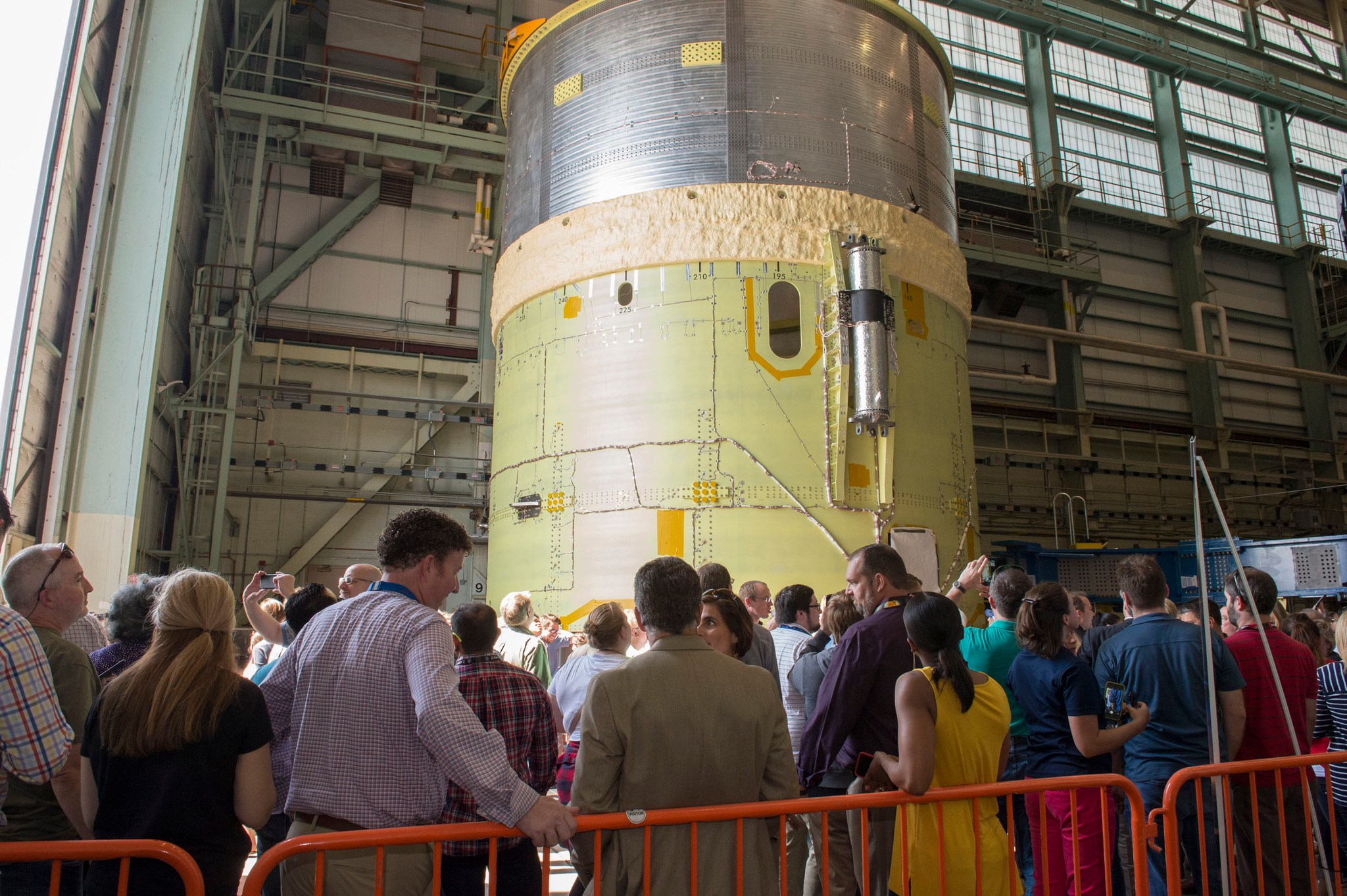
NASA Marshall Space Flight Center team members get an up-close-and-personal view of the core stage engine section structural test article for NASA’s Space Launch System May 19 inside Marshall’s Building 4619. The engine section, recently delivered via NASA’s barge Pegasus from NASA’s Michoud Assembly Facility, is the first of four core stage structural test articles scheduled to be delivered to Marshall for testing. Inside Building 4619, the engine section will be loaded into a test stand where it will be subjected to test loads simulating the pressures the SLS rocket will experience during launch and flight. The engine section, located at the bottom of the rocket’s core stage, will house the four RS-25 engines and be an attachment point for the two solid rocket boosters. (NASA/MSFC/Emmett Given)
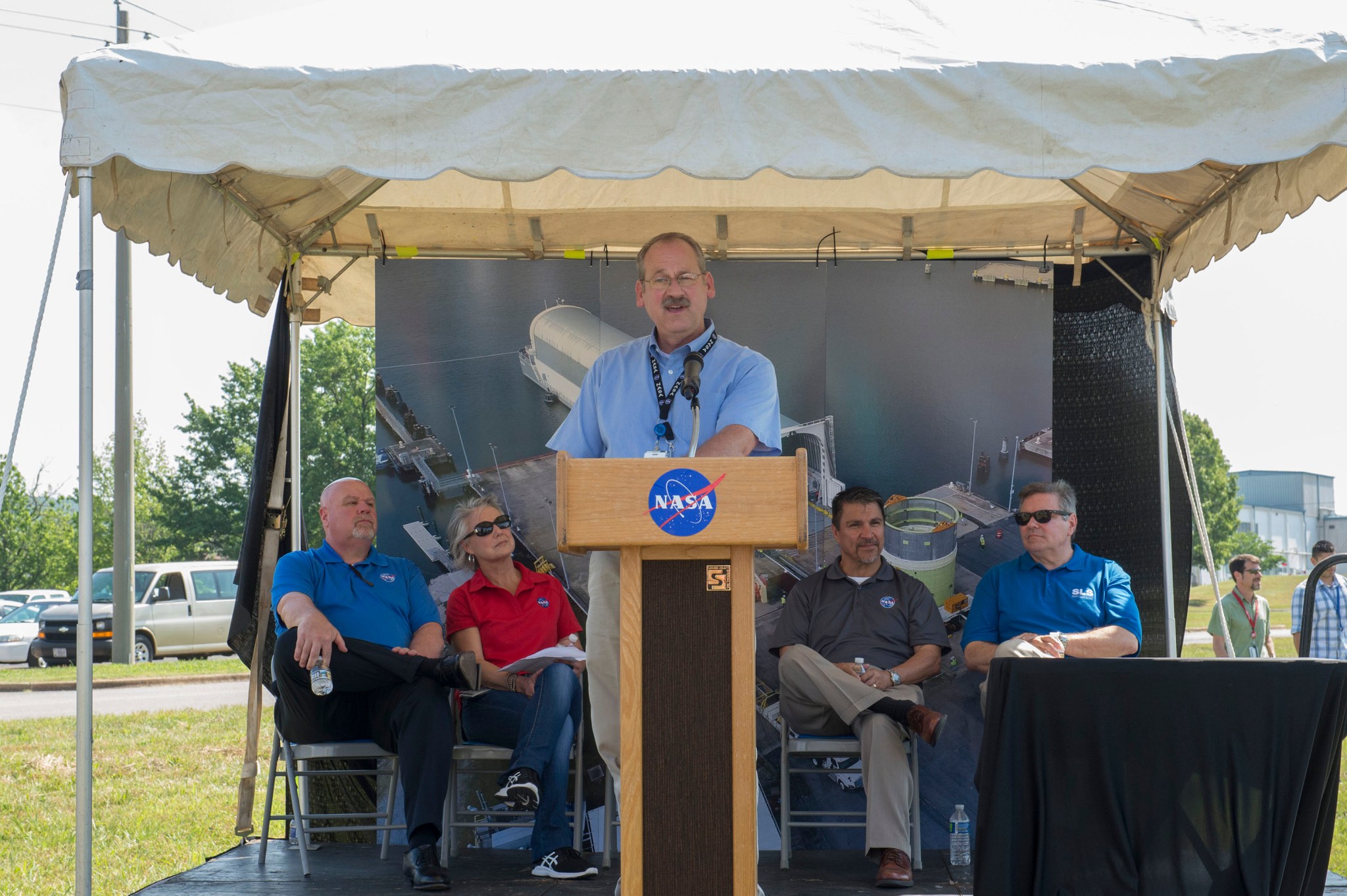
Robert Bobo, center, lead for Marshall’s structural testing branch, discusses upcoming structural tests for the SLS core stage before Marshall team members tour the test facility May 19. The SLS core stage engine section structural test article will be tested where tests for NASA’s Saturn and Space Shuttle Programs were once conducted — Building 4619. Bobo is joined on stage by, from left, John Honeycutt, SLS Program manager; Marcia Lindstrom, SLS Strategic Communications manager; Tim Flores, SLS Core Stage Integration manager; and Michael Wood, SLS chief engineer for the Boeing Co. of Chicago. (NASA/MSFC/Emmett Given)
Astronaut Shane Kimbrough Visits Marshall for Plaque Ceremony
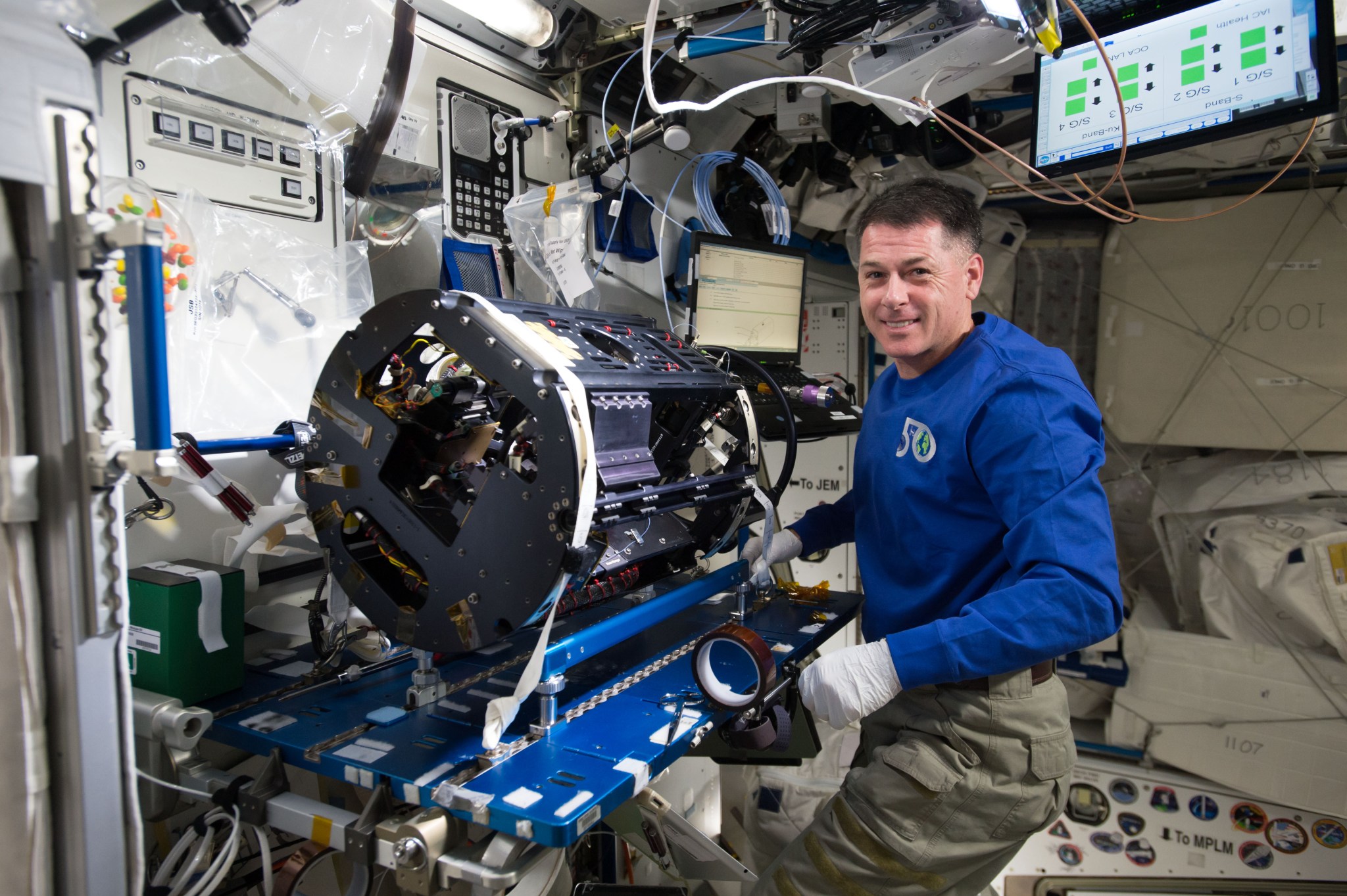
NASA astronaut Shane Kimbrough, veteran of two spaceflights, signs mission plaques to hang on the walls inside the Payload Operations Integration Center at NASA’s Marshall Space Flight Center May 17. The plaque-hanging ceremony is a tradition, signifying the completion of a mission to the International Space Station and the supportive roles played by Marshall team members. Kimbrough, a member of Expeditions 49 and 50, launched to the space station Oct. 19, 2016, and spent 173 days in space. While in orbit Kimbrough, the Expedition 50 commander, conducted science experiments in biology, biotechnology and physical science, and completed four spacewalks. Follow Kimbrough on Twitter for more information. (NASA/MSFC/Charles Beason)
Pegasus’ Arrival at Marshall Featured on ‘This Week @NASA’
The arrival of NASA’s barge Pegasus at NASA’s Marshall Space Flight Center is featured in the latest edition of “This Week @NASA,” a weekly video program broadcast nationwide on NASA-TV and posted online. The barge delivered the engine section structural test article for NASA’s new heavy-lift rocket — the Space Launch System.
NASA modified Pegasus to accommodate the massive SLS rocket’s core stage, increasing the barge’s length and weight-carrying capacity. The core stage test article — manufactured at NASA’s Michoud Assembly Facility — is the first of four core stage test articles scheduled to be delivered to Marshall for testing.
This delivery marks a critical milestone toward Exploration Mission-1, the first integrated flight of SLS and NASA’s Orion spacecraft. It also brings the agency a step closer to sending humans to deep-space destinations — including Mars.
View this and previous episodes at “This Week @NASA” on NASA’s YouTube page.
This Week in NASA History: Apollo 10 Splashes Down — May 26, 1969
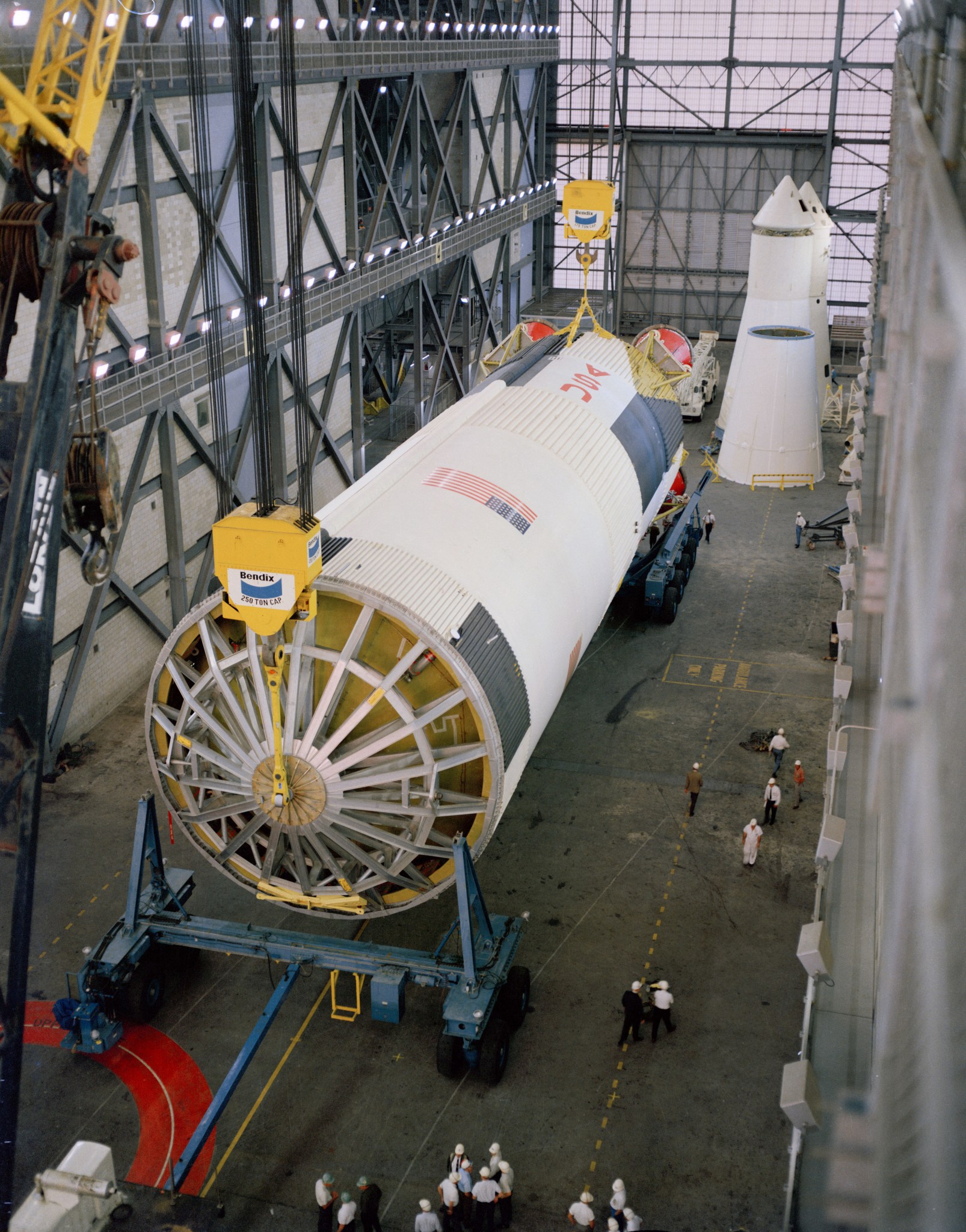
This week in 1969, the Apollo 10 crew splashed down in the Pacific Ocean following a successful eight-day mission to rehearse the lunar landing. Here, Saturn V first stage is prepared for final assembly in the high bay area of the Vehicle Assembly Building at NASA’s Kennedy Space Center. NASA’s Marshall Space Flight Center designed, developed and managed the production of the Saturn V rocket that took astronauts to the moon. Today, Marshall is developing NASA’s Space Launch System, the most powerful rocket ever built that will be capable of sending astronauts deeper into space than ever before, including to Mars. The NASA History Program is responsible for generating, disseminating, and preserving NASA’s remarkable history and providing a comprehensive understanding of the institutional, cultural, social, political, economic, technological, and scientific aspects of NASA’s activities in aeronautics and space. For more pictures like this one and to connect to NASA’s history, visit the Marshall History Program’s webpage. (NASA)
Obituaries
George K. Cruz, 58, of Huntsville, died May 17. He began working at the Marshall Center in 2003, where he was still employed as a network operations security manager at the time of his death.
Nathaniel G. Raley, 94, of Huntsville, died May 17. He retired from the Marshall Center in 1979 as an aerospace engineer.
Kenneth E. Riggs, 93, of Huntsville, died May 18. He retired from the Marshall Center in 1986 as an aerospace engineer. He is survived by his wife, Bobbye Hindman Riggs.



























